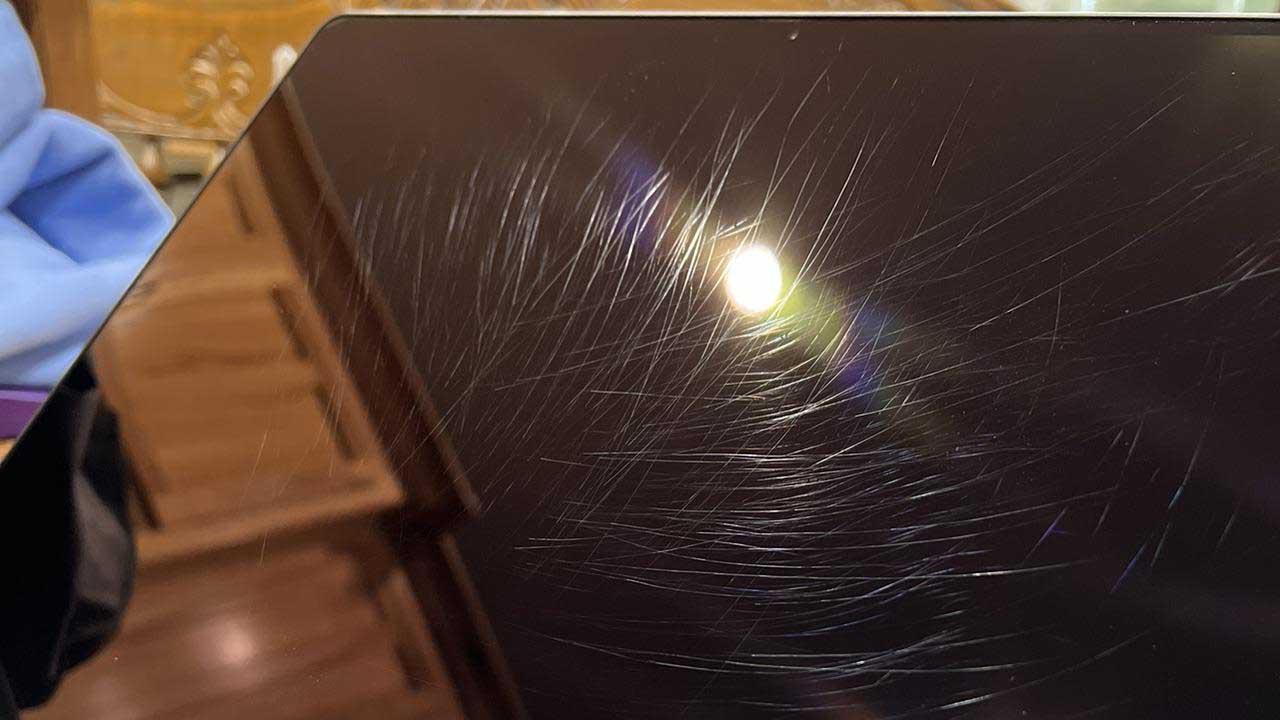Compared to a smartphone, scratches on the screen are much less frequent. However, whether it is a PC screen or a laptop screen, they can eventually appear, either by cleaning with an inappropriate or dirty cloth, or because you have pets with tendencies destructive. The thing is, if you’re in this situation, you probably want to fix it.
Can toothpaste really fix scratches?
That toothpaste is used to repair some scratches is a fact, although you should know first that not all toothpastes are used for this, some can damage the screen, and they don’t work the same on all materials, which depends on the type of screen you want to repair.
Toothpaste contains small abrasive particles, which can somewhat sand down scratches (not fill in gaps as many think) so that they become reflective again, and not that whitish appearance that makes them noticeable. In other words, toothpaste won’t help repair scratches, but it can help make them less noticeable.
We have already mentioned that not all toothpastes are suitable for this, nor are they suitable for all surfaces. As for the toothpaste:
- Use a paste type one, no gel type. The typical completely white pasta, not the ones that come with colored streaks. We are looking for the most neutral and least abrasive type of white paste possible.
- Avoid toothpastes that contain “pearls” as they are harder than the rest of the paste and could cause the opposite effect and further scratch the screen.
Regarding the type of screen, this method generally works better on screens with a glossy finish (glossy) than on those with a matte finish; Indeed, in many cases they have a glass above the panel itself and it is precisely the glass that has been scratched.
Now the method of application: with a clean, dry microfiber cloth, take a small amount of toothpaste (about the size of a chickpea, more or less), and spread it over the scratch in small circles , as you can see in the image above, being careful not to apply too much pressure. Normally about 60 seconds is enough, and we recommend doing this not only in the area of the scratch but over the entire surface of the screen as it will also create a small protective layer which will give the surface more shine (if not over the entire screen, it may not be homogeneous).
Then remove all the excess toothpaste with a clean, dry microfiber cloth (it can be the same, of course, but in an area that is not stained with toothpaste) and check the result: if everything went well , you will see that the scratches have disappeared or been well hidden.
And with an eraser?
Another typical home solution for repairing scratches on a screen is to use an eraser… the one we used in school to erase pencils, and which in fact many pens and mechanical pencils incorporate on the back. For this method, rather than those erasers which are very small and also of poor quality, we recommend that you use a typical school eraser, Milan, Pelikan or similar that you can buy in any stationery store.
With the eraser what we are going to achieve is to mask and smooth the indentations that remain with the scratches, but we are not going to be able to make them disappear as effectively as with toothpaste; therefore, this method would be for much more superficial scratches, and even then we warn you that it does not work so well. However, by trying you don’t lose anything either.
The method is simple: first gently rub the eraser over the scratches in favor of the scratches for about a minute, then do the same but perpendicular to the scratches for the same amount of time. Be careful not to press too hard, you won’t damage the screen. When you are done, just use a cloth to remove any remains that may have remained (the cloth can be slightly dampened to better remove the remains) and check the result.










